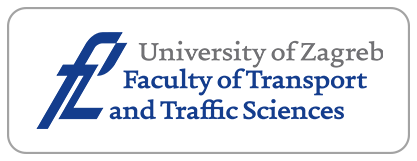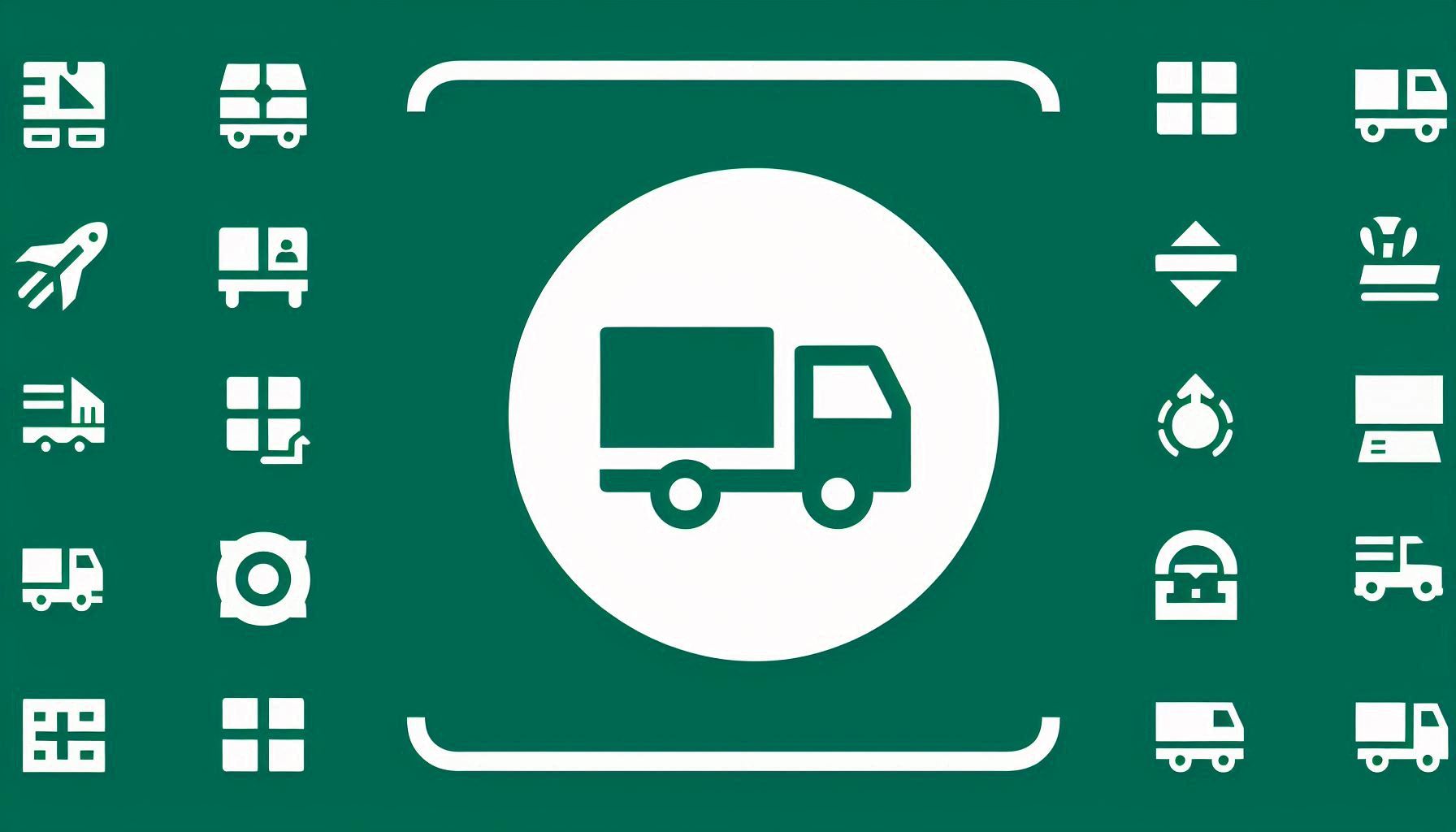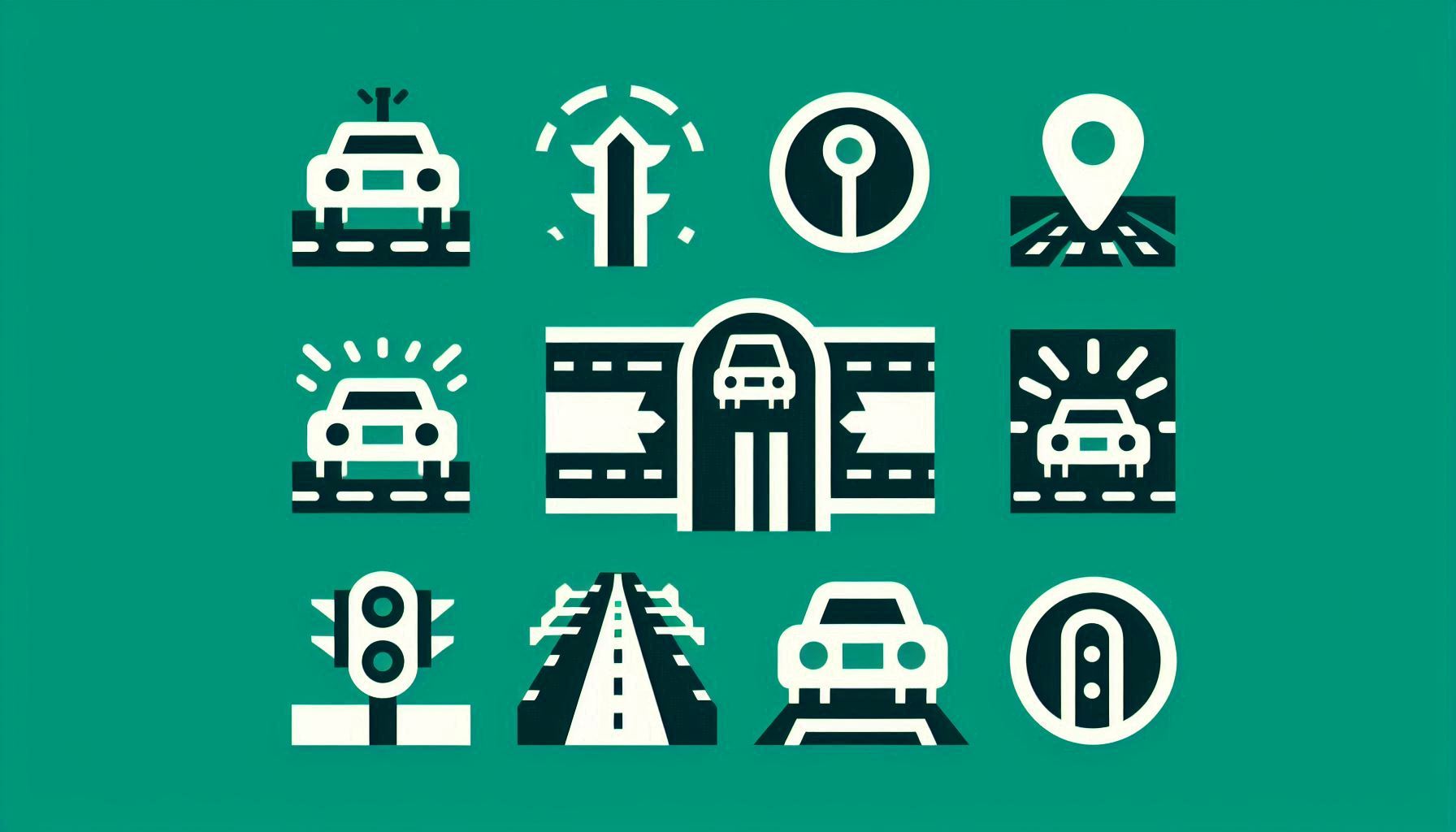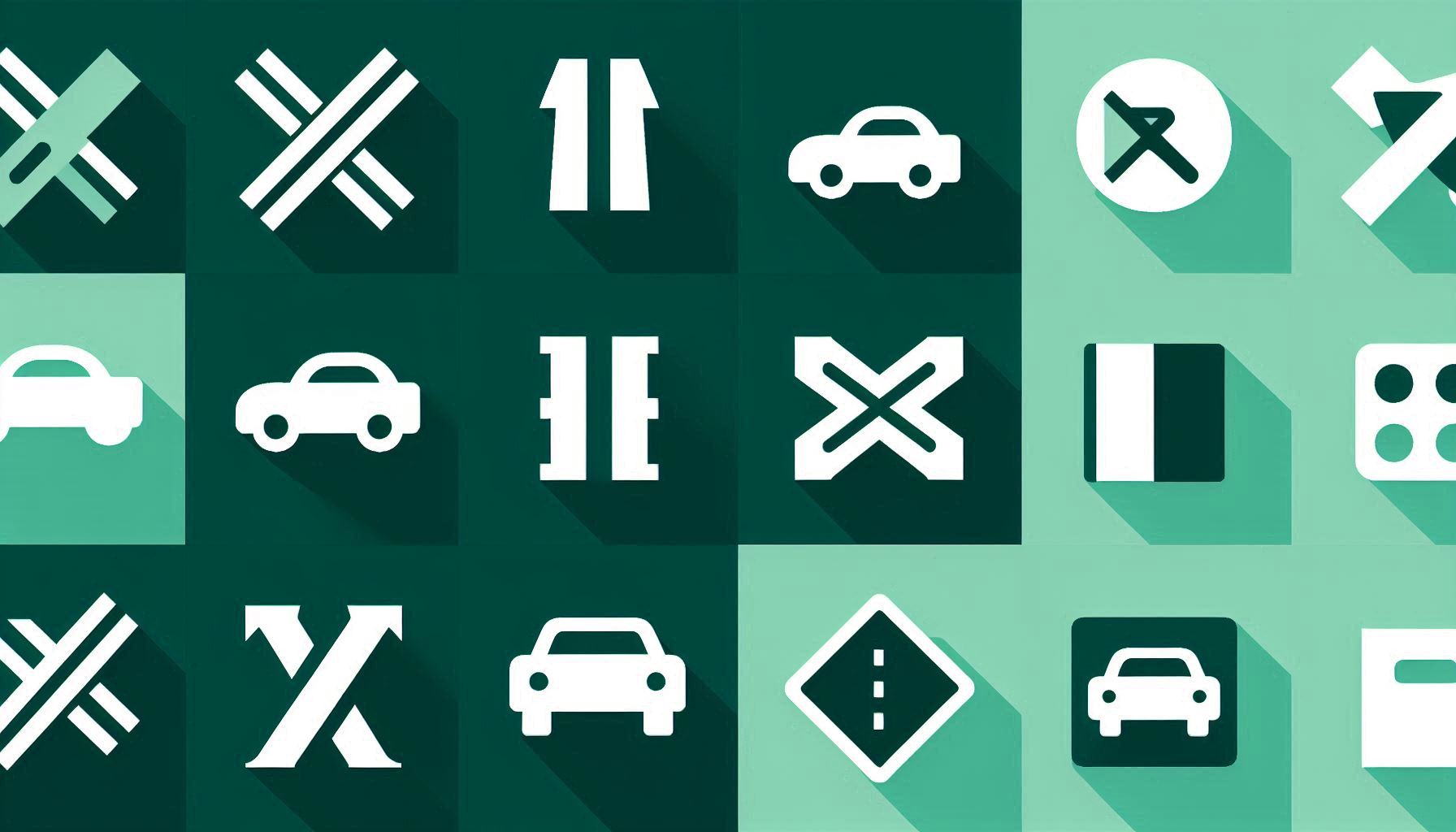AI on the Road – A Review of Technologies Enhancing Urban Traffic Safety and Efficiency

Downloads
Traffic management is becoming increasingly complicated, posing significant challenges to traditional systems. Adapting the intelligent transportation system (ITS) can resolve this issue. The present study identified peer-reviewed literature published between 2014 and 2023 in the most significant libraries, i.e. Google Scholar, Science Direct, ASCE Library, IEEE and others, to address this issue. Following that, 130 primary studies were identified, and the selected literature conducted systematic analysis. Research findings of RQ: 1 revealed that about 30% of total published articles between the year 2014-23 explored both efficiency and safety shows the significance of the study. To achieve the second objective RQ: 2 this study proposes a solution to improve traffic safety and risk management on the city’s key roadways. The study technique involves gathering data from various sources, including traffic cameras, sensors and vehicle tracking devices. Artificial driving (AD) models are capable of accurately predicting traffic patterns. Intelligent network connections facilitate seamless real-time data sharing between vehicles and buildings. This study thoroughly examines safety by analysing collision rates and reaction times and then compares the results to the outcomes when traditional traffic management (TTM) approach were implemented. Furthermore, it deals with exploring adaptive traffic control and predictive analytics as methods to address safety issues proactively. Case studies demonstrate the positive impact of AD and smart network connectivity on enhancing road safety in urban areas. The review concludes with a discussion of issues raised and recommendations for future research to improve safety assessments and risk management in metro regions with shifting arterial traffic flow.
Downloads
Alanazi F. A systematic literature review of autonomous and connected vehicles in traffic management. Applied Sciences. 2023;13(3). DOI: 10.3390/app13031789.
Wang ST, Zhu WX, Ma XL. Mixed traffic system with multiple vehicle types and autonomous vehicle platoon: Modeling, stability analysis and control strategy. Physica A: Statistical Mechanics and its Applications. 2023;632:129293. DOI: 10.1016/j.physa.2023.129293.
Chia WMD, Keoh SL, Goh C, Johnson C. Risk assessment methodologies for autonomous driving: A survey. IEEE Transactions on Intelligent Transportation Systems. 2022;23(10):16923-39. DOI: 10.1109/TITS.2022.3163747.
Ahangar MN, Ahmed QZ, Khan FA, Hafeez M. A survey of autonomous vehicles: Enabling communication technologies and challenges. Sensors. 2021;21(3). DOI: 10.3390/s21030706.
d'Orey PM, Ferreira M. ITS for sustainable mobility: A survey on applications and impact assessment tools. IEEE Transactions on Intelligent Transportation Systems. 2014;15(2):477-93. DOI: 10.1109/TITS.2013.2287257.
Nascimento AM, et al. A systematic literature review about the impact of artificial intelligence on autonomous vehicle safety. IEEE Transactions on Intelligent Transportation Systems. 2020;21(12):4928-46. DOI: 10.1109/TITS.2019.2949915.
Obaid L, Alattieh S, Abdallah M, Hamad K. Environmental impacts of the transition to automated vehicles: A life cycle perspective. Sustainable Materials and Technologies. 2023;38:e00725. DOI: 10.1016/j.susmat.2023.e00725.
Muhammad K, et al. Deep learning for safe autonomous driving: Current challenges and future directions. IEEE Transactions on Intelligent Transportation Systems. 2021;22(7):4316-36. DOI: 10.1109/TITS.2020.3032227.
Mehra A, Mandal M, Narang P, Chamola V. ReViewNet: A fast and resource optimized network for enabling safe autonomous driving in hazy weather conditions. IEEE Transactions on Intelligent Transportation Systems. 2021;22(7):4256-66. DOI: 10.1109/TITS.2020.3013099.
Tobin DM, Kumjian MR, Black AW. Effects of precipitation type on crash relative risk estimates in Kansas. Accid Anal Prev. 2021;151:105946.DOI: 10.1016/j.aap.2020.105946.
Rahman R, Bhowmik T, Eluru N, Hasan S. Assessing the crash risks of evacuation: A matched case-control approach applied over data collected during Hurricane Irma. Accident Analysis & Prevention. 2021;159:106260. DOI: 10.1016/j.aap.2021.106260.
Trirat P, Lee JG. DF-TAR: A deep fusion network for citywide traffic accident risk prediction with dangerous driving behavior. Proceedings of the Web Conference 2021; Ljubljana, Slovenia: Association for Computing Machinery; 2021. p. 1146–56. DOI: 10.1145/3442381.3450003.
Yao Z, et al. Optimal lane-changing trajectory planning for autonomous vehicles considering energy consumption. Expert Systems with Applications. 2023;225:120133. DOI: 10.1016/j.eswa.2023.120133.
Jiang Y, et al. A new control strategy of CAVs platoon for mitigating traffic oscillation in a two-lane highway. Physica A: Statistical Mechanics and its Applications. 2023;630:129289. DOI: 10.1016/j.physa.2023.129289.
Mantouka EG, Vlahogianni EI. Deep reinforcement learning for personalized driving recommendations to mitigate aggressiveness and riskiness: Modeling and impact assessment. Transportation Research Part C: Emerging Technologies. 2022;142:103770. DOI: 10.1016/j.trc.2022.103770.
Huang T, Wang S, Sharma A. Highway crash detection and risk estimation using deep learning. Accident Analysis & Prevention. 2020;135:105392. DOI: 10.1016/j.aap.2019.105392.
Das LC, Won M. Saint-acc: Safety-aware intelligent adaptive cruise control for autonomous vehicles using deep reinforcement learning. International Conference on Machine Learning; 2021: PMLR. DOI:
48550/arXiv.2104.06506.
Zhao J, Liu P, Xu C, Bao J. Understand the impact of traffic states on crash risk in the vicinities of Type A weaving segments: A deep learning approach. Accident Analysis & Prevention. 2021;159:106293. DOI: 10.1016/j.aap.2021.106293.
Zhang F, et al. Stability and safety analysis of mixed traffic flow considering network function degradation and platoon driving on the road with a slope. Physica A: Statistical Mechanics and its Applications. 2023;630:129280. DOI: 10.1016/j.physa.2023.129280.
Ma Q, et al. Modeling crash risk of horizontal curves using large-scale auto-extracted roadway geometry data. Accident Analysis & Prevention. 2020;144:105669. DOI: 10.1016/j.aap.2020.105669.
Ghoul T, Sayed T. Real-time signal-vehicle coupled control: An application of connected vehicle data to improve intersection safety. Accident Analysis & Prevention. 2021;162:106389. DOI: 10.1016/j.aap.2021.106389.
Hosseini S, Turhan B, Gunarathna D. A Systematic literature review and meta-analysis on cross project defect prediction. IEEE Transactions on Software Engineering. 2019;45(2):111-47. DOI: 10.1109/TSE.2017.2770124.
Han J, et al. Distributed finite-time safety consensus control of vehicle platoon with senor and actuator failures. IEEE Transactions on Vehicular Technology. 2023;72(1):162-75. DOI: 10.1109/TVT.2022.3203056.
Zheng Q, Xu C, Liu P, Wang Y. Investigating the predictability of crashes on different freeway segments using the real-time crash risk models. Accident Analysis & Prevention. 2021;159:106213.DOI: 10.1016/j.aap.2021.106213.
Wang C, et al. SRL-TR2: A safe reinforcement learning based trajectory tracker framework. IEEE Transactions on Intelligent Transportation Systems. 2023;24(6):5765-80. DOI: 10.1109/TITS.2023.3250720.
Kitchenham B, et al. Systematic literature reviews in software engineering – A systematic literature review. Information and Software Technology. 2009;51(1):7-15.DOI: 10.1016/j.infsof.2008.09.009.
Wohlin C. Guidelines for snowballing in systematic literature studies and a replication in software engineering. Proceedings of the 18th International Conference on Evaluation and Assessment in Software Engineering; London, England, United Kingdom: Association for Computing Machinery; 2014. p. Article DOI: 10.1145/2601248.2601268.
Kullgren A, Amin K, Tingvall C. Effects on crash risk of automatic emergency braking systems for pedestrians and bicyclists. Traffic Inj Prev. 2023;24(sup1):S111-s5. DOI: 10.1080/15389588.2022.2131403.
Breitlauch P, et al. A novel method for the automated simulation of various vehicle collisions to estimate crash severity. Traffic Injury Prevention. 2023;24(sup1):S116-S23. DOI: 10.1080/15389588.2022.2159761.
de Gelder E, Op den Camp O. How certain are we that our automated driving system is safe? Traffic Inj Prev. 2023;24(sup1):S131-s40. DOI: 10.1080/15389588.2023.2186733.
Arvin R, Khattak AJ. Driving impairments and duration of distractions: Assessing crash risk by harnessing microscopic naturalistic driving data. Accid Anal Prev. 2020;146:105733. DOI: 10.1016/j.aap.2020.105733.
Olszewski P, Szagała P, Rabczenko D, Zielińska A. Investigating safety of vulnerable road users in selected EU countries. Journal of Safety Research. 2019;68:49-57. DOI: 10.1016/j.jsr.2018.12.001
Hua C, Fan W. Injury severity analysis of time-of-day fluctuations and temporal volatility in reverse sideswipe collisions: A random parameter model with heterogeneous means and heteroscedastic variances. Journal of Safety Research. 2023;84:74-85. DOI: 10.1016/j.jsr.2022.10.009.
Wang Z, et al. Risk factors affecting crash injury severity for different groups of e-bike riders: A classification tree-based logistic regression model. Journal of Safety Research. 2021;76:176-83. DOI: 10.1016/j.jsr.2020.12.009.
Zhang C, et al. A crash risk identification method for freeway segments with horizontal curvature based on real-time vehicle kinetic response. Accident Analysis & Prevention. 2021;150:105911. DOI: 10.1016/j.aap.2020.105911.
Branion-Calles M, et al. Cyclist crash rates and risk factors in a prospective cohort in seven European cities. Accident Analysis & Prevention. 2020;141:105540. DOI: 10.1016/j.aap.2020.105540.
Al-Omari MeMA, Abdel-Aty M, Cai Q. Crash analysis and development of safety performance functions for Florida roads in the framework of the context classification system. Journal of Safety Research. 2021;79:1-13. DOI: 10.1016/j.jsr.2021.08.004.
Wang D, Liu Q, Ma L, Zhang Y, Cong H. Road traffic accident severity analysis: A census-based study in China. Journal of Safety Research. 2019;70:135-47. DOI: 10.1016/j.jsr.2019.06.002.
Jiang F, Yuen KKR, Lee EWM. Analysis of motorcycle accidents using association rule mining-based framework with parameter optimization and GIS technology. Journal of Safety Research. 2020;75:292-309. DOI: 10.1016/j.jsr.2020.09.004.
Lu D, Guo F, Li F. Evaluating the causal effects of cellphone distraction on crash risk using propensity score methods. Accident Analysis & Prevention. 2020;143:105579. DOI:10.1016/j.aap.2020.105579.
Wen X, Xie Y, Wu L, Jiang L. Quantifying and comparing the effects of key risk factors on various types of roadway segment crashes with LightGBM and SHAP. Accid Anal Prev. 2021;159:106261. DOI: 10.1016/j.aap.2021.106261.
Hu J, Huang M-C, Yu X. Efficient mapping of crash risk at intersections with connected vehicle data and deep learning models. Accident Analysis & Prevention. 2020;144:105665. DOI: 10.1016/j.aap.2020.105665.
Son S, Jeong J, Park S, Park J. Effects of advanced warning information systems on secondary crash risk under connected vehicle environment. Accident Analysis & Prevention. 2020;148:105786. DOI: 10.1016/j.aap.2020.105786.
Török Á. Do automated vehicles reduce the risk of crashes–dream or reality? IEEE Transactions on Intelligent Transportation Systems. 2023;24(1):718-27. DOI: 10.1109/TITS.2022.3212280.
Nguyen-Phuoc DQ, et al. Turn signal use among motorcyclists and car drivers: The role of environmental characteristics, perceived risk, beliefs and lifestyle behaviours. Accident Analysis & Prevention. 2020;144:105611. DOI: 10.1016/j.aap.2020.105611.
Ding N, Jiao N, Zhu S, Liu B. Structural equations modeling of real-time crash risk variation in car-following incorporating visual perceptual, vehicular, and roadway factors. Accident Analysis & Prevention. 2019;133:105298. DOI: 10.1016/j.aap.2019.105298.
Kwon JH, Cho GH. An examination of the intersection environment associated with perceived crash risk among school-aged children: Using street-level imagery and computer vision. Accident Analysis & Prevention. 2020;146:105716. DOI: 10.1016/j.aap.2020.105716.
Mitra S, Bhowmick D. Status of signalized intersection safety-A case study of Kolkata. Accident Analysis & Prevention. 2020;141:105525. DOI: 10.1016/j.aap.2020.105669.
Essa M, Sayed T. Full Bayesian conflict-based models for real time safety evaluation of signalized intersections. Accident Analysis & Prevention. 2019;129:367-81. DOI: 10.1016/j.aap.2018.09.017.
Zafian T, et al. Using SHRP2 NDS data to examine infrastructure and other factors contributing to older driver crashes during left turns at signalized intersections. Accident Analysis & Prevention. 2021;156:106141. DOI: 10.1016/j.aap.2021.106141.
Mattas K, et al. Fuzzy surrogate safety metrics for real-time assessment of rear-end collision risk. A study based on empirical observations. Accident Analysis & Prevention. 2020;148:105794. DOI: 10.1016/j.aap.2020.105794.
Rowe R, et al. Why are newly qualified motorists at high crash risk? Modelling driving behaviours across the first six months of driving. Accident Analysis & Prevention. 2022;177:106832. DOI: 10.1016/j.aap.2022.106832.
Lin Q, Li S, Ma X, Lu G. Understanding take-over performance of high crash risk drivers during conditionally automated driving. Accident Analysis & Prevention. 2020;143:105543. DOI: 10.1016/j.aap.2020.105543.
Ko J, Jang J, Oh C. A multi-agent driving simulation approach for evaluating the safety benefits of connected vehicles. IEEE Transactions on Intelligent Transportation Systems. 2022;23(5):4512-24. DOI: 10.1109/TITS.2020.3045675.
Wang Y, Xu W, Zhang W, Zhao JL. SafeDrive: A new model for driving risk analysis based on crash avoidance. IEEE Transactions on Intelligent Transportation Systems. 2022;23(3):2116-29. DOI: 10.1109/TITS.2020.3033276.
Li P, Abdel-Aty M, Yuan J. Real-time crash risk prediction on arterials based on LSTM-CNN. Accident Analysis & Prevention. 2020;135:105371. DOI: 10.1016/j.aap.2019.105371.
Li P, Abdel-Aty M. A hybrid machine learning model for predicting real-time secondary crash likelihood. Accid Anal Prev. 2022;165:106504. DOI: 10.1016/j.aap.2021.106504.
Gong Y, Abdel-Aty M, Yuan J, Cai Q. Multi-Objective reinforcement learning approach for improving safety at intersections with adaptive traffic signal control. Accident Analysis & Prevention. 2020;144:105655. DOI: 10.1016/j.aap.2020.105655.
Zhu M, et al. Safe, efficient, and comfortable velocity control based on reinforcement learning for autonomous driving. Transportation Research Part C: Emerging Technologies. 2020;117:102662. DOI: 10.1016/j.trc.2020.102662.
Cao Z, et al. Trustworthy safety improvement for autonomous driving using reinforcement learning. Transportation Research Part C: Emerging Technologies. 2022;138:103656. DOI: 10.1016/j.trc.2022.103656.
Man CK, et al. Wasserstein generative adversarial network to address the imbalanced data problem in real-time crash risk prediction. IEEE Transactions on Intelligent Transportation Systems. 2022;23(12):23002-13. DOI: 10.1109/TITS.2022.3207798.
Zhou Z, et al. RiskOracle: A minute-level citywide traffic accident forecasting framework. Proceedings of the AAAI Conference on Artificial Intelligence. 2020;34(01):1258-65. DOI: 10.1609/aaai.v34i01.5480.
Wang B, Lin Y, Guo S, Wan H. GSNet: Learning spatial-temporal correlations from geographical and semantic aspects for traffic accident risk forecasting. Proceedings of the AAAI conference on artificial intelligence. 2021. DOI: 10.1609/aaai.v35i5.16566.
Jiang Y, et al. Traffic safety evaluation of mixed traffic flow considering the maximum platoon size of connected automated vehicles. Physica A: Statistical Mechanics and its Applications. 2023;612:128452. DOI: 10.1016/j.physa.2023.128452.
Xie K, Yang D, Ozbay K, Yang H. Use of real-world connected vehicle data in identifying high-risk locations based on a new surrogate safety measure. Accident Analysis & Prevention. 2019;125:311-9. DOI: 10.1016/j.aap.2018.07.002.
Peng Y, et al. Examining imbalanced classification algorithms in predicting real-time traffic crash risk. Accident Analysis & Prevention. 2020;144:105610. DOI:10 .1016/j.aap.2020.105610.
Zhang Z, Liu F, Wolshon B, Sheng Y. Virtual traffic signals: Safe, rapid, efficient and autonomous driving without traffic control. IEEE Transactions on Intelligent Transportation Systems. 2021;22(11):6954- DOI: 10.1109/TITS.2020.2998907.
Kim H, Lee K, Hwang G, Suh C. Crash to not crash: Learn to identify dangerous vehicles using a simulator. Proceedings of the AAAI Conference on Artificial Intelligence. 2019;33(01):978-85. DOI: 10.1609/aaai.v33i01.3301978.
Zheng L, Sayed T. A novel approach for real time crash prediction at signalized intersections. Transportation Research Part C: Emerging Technologies. 2020;117:102683. DOI: 10.1016/j.trc.2020.102683.
Gu Y, et al. Predicting intersection crash frequency using connected vehicle data: A framework for geographical random forest. Accident Analysis & Prevention. 2023;179:106880. DOI: 10.1016/j.aap.2022.106880.
Lin DJ, Chen MY, Chiang HS, Sharma PK. Intelligent traffic accident prediction model for internet of vehicles with deep learning approach. IEEE Transactions on Intelligent Transportation Systems. 2022;23(3):2340-9. DOI: 10.1109/TITS.2021.3074987.
Basso F, Basso LJ, Bravo F, Pezoa R. Real-time crash prediction in an urban expressway using disaggregated data. Transportation Research Part C: Emerging Technologies. 2018;86:202-19. DOI: 10.1016/j.trc.2017.11.014.
Cai Q, et al. Real-time crash prediction on expressways using deep generative models. Transportation Research Part C: Emerging Technologies. 2020;117:102697. DOI: 10.1016/j.trc.2020.102697.
Guo M, et al. A study of freeway crash risk prediction and interpretation based on risky driving behavior and traffic flow data. Accident Analysis & Prevention. 2021;160:106328. DOI: 10.1016/j.aap.2021.106328.
Roy A, Hossain M, Muromachi Y. A deep reinforcement learning-based intelligent intervention framework for real-time proactive road safety management. Accident Analysis & Prevention. 2022;165:106512. DOI: 10.1016/j.aap.2021.106512.
Chen J, Wu Z, Zhang J. Driving safety risk prediction using cost-sensitive with nonnegativity-constrained autoencoders based on imbalanced naturalistic driving data. IEEE Transactions on Intelligent Transportation Systems. 2019;20(12):4450-65. DOI: 10.1109/TITS.2018.2886280.
Mahajan V, Katrakazas C, Antoniou C. Crash risk estimation due to lane changing: A data-driven approach using naturalistic data. IEEE Transactions on Intelligent Transportation Systems. 2022;23(4):3756- DOI: 10.1109/TITS.2020.3042097.
Li ZN, Huang XH, Mu T, Wang J. Attention-based lane change and crash risk prediction model in highways. IEEE Transactions on Intelligent Transportation Systems. 2022;23(12):22909-22. DOI: 10.1109/TITS.2022.3193682.
Chen T, Shi X, Wong YD, Yu X. Predicting lane-changing risk level based on vehicles’ space-series features: A pre-emptive learning approach. Transportation Research Part C: Emerging Technologies. 2020;116:102646. DOI: 10.1016/j.trc.2020.102646.
Karim MM, Li Y, Qin R, Yin Z. A dynamic spatial-temporal attention network for early anticipation of traffic accidents. IEEE Transactions on Intelligent Transportation Systems. 2022;23(7):9590-600. DOI: 10.1109/TITS.2022.3155613.
Formosa N, Quddus M, Ison S, Timmis A. A new modeling approach for predicting vehicle-based safety threats. IEEE Transactions on Intelligent Transportation Systems. 2022;23(10):18175-85. DOI: 10.1109/TITS.2022.3156763.
Arbabzadeh N, Jafari M. A data-driven approach for driving safety risk prediction using driver behavior and roadway information data. IEEE transactions on intelligent transportation systems. 2017;19(2):446-60. DOI: 10.1109/TITS.2017.2700869.
Wang X, et al. A real-time collision prediction mechanism with deep learning for intelligent transportation system. IEEE Transactions on Vehicular Technology. 2020;69(9):9497-508. DOI:10.1109/TVT.2020.3003933.
Elamrani Abou Elassad Z, Mousannif H, Al Moatassime H. A real-time crash prediction fusion framework: An imbalance-aware strategy for collision avoidance systems. Transportation Research Part C: Emerging Technologies. 2020;118:102708. DOI: 10.1016/j.trc.2020.102708.
Hao W, et al. Development of a safety prediction method for arterial roads based on big-data technology and stacked autoencoder-gated recurrent unit. IEEE Transactions on Intelligent Transportation Systems. 2022;23(11):20110-22. DOI: 10.1109/TITS.2022.3172480.
Stülpnagel R, Lucas J. Crash risk and subjective risk perception during urban cycling: Evidence for congruent and incongruent sources. Accident Analysis & Prevention. 2020;142:105584. DOI: 10.1016/j.aap.2020.105584.
Shangguan Q, et al. A proactive lane-changing risk prediction framework considering driving intention recognition and different lane-changing patterns. Accident Analysis & Prevention. 2022;164:106500. DOI: 10.1016/j.aap.2021.106500.
Islam Z, Abdel-Aty M, Cai Q, Yuan J. Crash data augmentation using variational autoencoder. Accident Analysis & Prevention. 2021;151:105950. DOI: 10.1016/j.aap.2020.105950.
Basso F, Pezoa R, Varas M, Villalobos M. A deep learning approach for real-time crash prediction using vehicle-by-vehicle data. Accident Analysis & Prevention. 2021;162:106409. DOI: 10.1016/j.aap.2021.106409.
Huang Y, Yan X, Li X, Yang J. Using a multi-user driving simulator system to explore the patterns of vehicle fleet rear-end collisions occurrence under different foggy conditions and speed limits. Transportation Research Part F: Traffic Psychology and Behaviour. 2020;74:161-72. DOI:10.1016/j.trf.2020.08.025.
Gratzer AL, Thormann S, Schirrer A, Jakubek S. String stable and collision-safe model predictive platoon control. IEEE Transactions on Intelligent Transportation Systems. 2022;23(10):19358-73. DOI: 10.1109/TITS.2022.3160236.
Kim G, Kang J, Sohn K. A meta–reinforcement learning algorithm for traffic signal control to automatically switch different reward functions according to the saturation level of traffic flows. Computer-Aided Civil and Infrastructure Engineering. 2023;38(6):779-98. DOI: 10.1111/mice.12924.
G. Fiore MLdB, A. Di Pace, and A. Maugeri. Green light optimization for arterial networks in saturated conditions. Journal of Advanced Transportation. 2017;2018(1):1-18. DOI: 10.1155/2018/2385492.
(FHWA) FHA. Traffic Signal Timing Manual," 2006. Report No.: FHWA-HRT-06-030, 2006.
Wang Y, Papageorgiou M, Messmer A. Real-time freeway traffic state estimation based on extended Kalman filter: Adaptive capabilities and real data testing. Transportation Research Part A: Policy and Practice. 2008;42(10):1340-58. DOI: 10.1016/j.tra.2008.06.001.
Lv Y, et al. Traffic flow prediction with big data: A deep learning approach. IEEE Transactions on Intelligent Transportation Systems. 2015;16(2):865-73. DOI: 10.1109/TITS.2014.2345663.
Ferreira I, Lobo J, Soares J. Deep learning for video-based traffic flow analysis: A review. IEEE Transactions on Intelligent Transportation Systems. 2021;22(5):3227-46. DOI: 10.1109/TITS.2020.00942.
He J, et al. Cooperative connected autonomous vehicles (CAV): Research, applications and challenges. 2019 IEEE 27th International Conference on Network Protocols (ICNP); 2019 8-10 Oct. 2019. DOI: 10.1109/ICNP.2019.8888126.
Lv Y, et al. Traffic flow prediction with big data: A deep learning approach. IEEE transactions on intelligent transportation systems. 2014;16(2):865-73. DOI: 10.1109/TITS.2014.2345663.
Qureshi KN, Abdullah AH. A survey on intelligent transportation systems. Middle-East Journal of Scientific Research. 2013;15(5):629-42. DOI: 10.5829/idosi.mejsr.2013.15.5.11215.
Xu D, et al. Real-time road traffic state prediction based on ARIMA and Kalman filter. Frontiers of Information Technology & Electronic Engineering. 2017;18:287-302. DOI: 10.1631/FITEE.1500381.
Rasheed, F. Deep reinforcement learning for traffic signal control: A review. IEEE Access. 2020;8:208016-208044. DOI: 10.1109/ACCESS.2020.3034141.
Kechagias EP, Gayialis SP, Konstantakopoulos GD, Papadopoulos GA. Traffic flow forecasting for city logistics: A literature review and evaluation. International Journal of Decision Support Systems. 2019;4(2):159-76. DOI: 10.1504/IJDSS.2019.104556.
Gjoreski M, Liu M, Obradovic D. Traffic congestion prediction using machine learning techniques: Survey and comparative analysis. International Journal of Neural Networks and Applications. 2018;10(2):9-23. DOI: 10.48550/arXiv.2206.10983.
Nie L, Jiang D, Yu S, Song H. Network traffic prediction based on deep belief network in wireless mesh backbone networks. 2017 IEEE Wireless Communications and Networking Conference (WCNC); 2017: IEEE. DOI: 10.1109/WCNC.2017.7925498.
Hu Z, Shao F, Sun R. A new perspective on traffic flow prediction: A graph spatial-temporal network with complex network information. Electronics. 2022;11(15):2432. DOI: 10.3390/electronics11152432.
Chaudhary N, Chandra S. A survey of fuzzy logic applications in traffic signal control. International Journal of Intelligent Transportation Systems. 2017;21(2):689-707. DOI: 10.1109/second.2006.1629329.
Wei H, Zheng G, Gayah V, Li Z. A survey on traffic signal control methods. arXiv preprint arXiv:190408117. 2019. DOI: 10.48550/arXiv.1904.08117.
Ravish R, Swamy SR. Intelligent traffic management: A review of challenges, solutions, and future perspectives. Transport and Telecommunication. 2021;22(2):163-182. DOI: 10.2478/ttj-2021-0013.
Guo S, Huang Y, Song Y, Liu Z. Big data for intelligent transportation systems: A survey. IEEE Transactions on Intelligent Transportation Systems. 2022;23(1):14-32. DOI: 10.1109/TITS.2022.3232999.
Razali NAM, et al. Gap, techniques and evaluation: Traffic flow prediction using machine learning and deep learning. J Big Data. 2021;8:152. DOI: 10.1186/s40537-021-00542-7.
Arthurs P, et al. A taxonomy and survey of edge cloud computing for intelligent transportation systems and connected vehicles. IEEE Transactions on Intelligent Transportation Systems. 2022;23(7):6206-6221. DOI: 10.1109/TITS.2021.3084396.
Olugbade S, et al. A review of artificial intelligence and machine learning for incident detectors in road transport systems. Mathematical and Computational Applications. 2022;27(5):77. DOI: 10.3390/mca27050077.
Jiang W, Luo J. Big data for traffic estimation and prediction: A survey of data and tools. Applied System Innovation. 2022;5(1):23. DOI: 10.3390/asi5010023.
Jiang W, Luo J. Big data for traffic estimation and prediction: A survey of data and tools. Applied System Innovation. 2022;5(1):23. DOI: 10.3390/asi5010023.
Sun D, Jamshidnejad A, De Schutter B. A novel framework combining MPC and deep reinforcement learning with application to freeway traffic control. IEEE Transactions on Intelligent Transportation Systems. 2024;25(7):6756-6769. DOI: 10.1109/TITS.2023.3342651.
Kaiser N, Barstow CK. Rural transportation infrastructure in low- and middle-income countries: A review of impacts, implications, and interventions. Sustainability. 2022;14(4):2149. DOI: 10.3390/su14042149.
Kashyap AA, et al. Traffic flow prediction models – A review of deep learning techniques. Cogent Engineering, 2021;9(1). DOI: 10.1080/23311916.2021.2010510.
Lamssaggad A, Benamar N, Hafid AS, Msahli M. A survey on the current security landscape of intelligent transportation systems. IEEE Access. 2021;9:9180-9208. DOI: 10.1109/ACCESS.2021.3050038.
Ahmed HU, Huang Y, Lu P, Bridgelall R. Technology developments and impacts of connected and autonomous vehicles: An overview. Smart Cities. 2022;5:382-404. DOI: 10.3390/smartcities5010022.
Shaheen SA, Gärling T. Public perception of autonomous vehicles: A review. Transportation Research Part A: Policy and Practice. 2016;96:161-79. DOI: 10.33448/rsd-v10i16.24236.
Fagnant DJ, Kockelman K. Preparing a nation for autonomous vehicles: Opportunities, barriers and policy recommendations. Transportation Research Part A: Policy and Practice. 2015;77:167-81. DOI: 10.1016/j.tra.2015.04.003.
Louati A, et al. Sustainable smart cities through multi-agent reinforcement learning-based cooperative autonomous vehicles. Sustainability. 2024;16(5):1779. DOI: 10.3390/su16051779.
Yuen KF, et al. Understanding public acceptance of autonomous vehicles using the theory of planned behaviour. Int J Environ Res Public Health. 2020;17(12). DOI: 10.3390/ijerph17124419.
Fagnant DJ, Kockelman K, Zia M. Preparing for autonomous vehicles: What cities need to do. Transportation Research Record:. Journal of the Transportation Research Board. 2016;2590:1-10. DOI: 10.1016/j.tra.2015.04.003.
Goodrich KH, Wurman, PR, Schultz, AC. Toward a socially beneficial future of autonomous vehicles. IT Professional. 2016;18(4):40-6. DOI: 10.48550/arXiv.2501.06089.
Copyright (c) 2025 Fayez ALANAZI

This work is licensed under a Creative Commons Attribution-NonCommercial 4.0 International License.




















